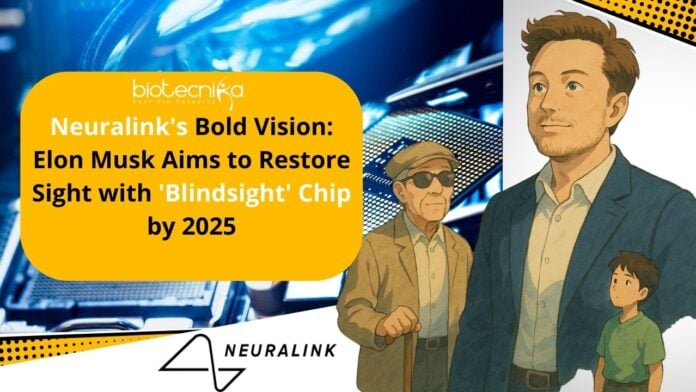Neuralink Blindsight Chip 2025 – Elon Musk Aims to Restore Sight
Brain-Chip startup Neuralink aims to make significant milestones in the dynamic field of vision restoration. Elon Musk stated that by the end of 2025, Neuralink plans to implant its artificial visual prosthesis, ‘Blindsight’, which will be implanted in a human for the very first time.
He shared his ambitious vision goal in a recent event in Town Hall, Wisconsin, The U.S. He said that during the early phase, ‘Blindsight’ would only be capable of providing low-resolution vision, just like Atari Graphics, to blind people.
Elon Musk, while explaining the company’s progress, addressed the audience, stating, “We’re hoping that later this year, we’ll have the first human implant, allowing someone who is completely blind to see.”
While the Tech MMogul was optimistic, he cautioned everyone that the early version of ‘Blindsight’ would provide only low-resolution vision, which he likened to the graphic quality of early Atari video games. To this, Elon Musk stated, “It’ll start off with very low resolution, but over time, the device will advance to provide vision that could be considered superhuman,” emphasizing ‘Blindsight‘s’ potential for future advancements.
‘Blindsight’ is designed to provide vision even for those people who have damaged optic nerves or lost both their eyes. In a tweet on X.com, Elon Musk outlined his vision for the device, highlighting that it could allow people who are blind from birth to experience sight for the first time.
The ‘Blindsight’ device consists of a microelectrode array, which is implanted directly into the visual cortex (an area of the brain responsible for processing visual stimuli). This microelectrode array has the potential to stimulate neurons in the visual cortex based on visual data that’s received from a camera. According to reports, the device uses a small camera that captures images as well as relays them to the brain, allowing users to perceive their surroundings in real-time.
In September 2024, the FDA (Food and Drug Administration) granted the ‘Blindsight’ device a ‘breakthrough’ status. This status was a designation aimed at accelerating and enhancing the regulatory review as well as the development process of Medical Devices that address life-threatening conditions. Even though this special status is a significant step forward, it still doesn’t indicate that ‘Blindsight’ can be considered as a complete cure for blindness. Instead, it showcases the FDA’s interest in accelerating the approval process for innovative and futuristic technologies that signify promise in addressing serious health issues like blindness.
Despite so much excitement surrounding the devices, researchers have raised some important concerns about the current state of blindsight as well as its ability to fully recover vision. Earlier, some critics argued about Elon Musk’s statements on the device have been criticised as misleading by various industry experts. A Biomedical Engineer at The IIIinosis Institute of Technology, Philip Troyk, while addressing IEEE Spectrum, compared the device to assistive tools such as a guide dog or a walking cane, and signified this device would work as an enhancement rather than a true replacement for these aids.
Despite such growing issues, Neuralink’s efforts continue to grab the Medical as well as Technology communities’ attention. Elon Musk’s vision for ‘Blindsight’ remains ambitious and futuristic, with the potential to practically change millions of blind people’s lives if Neuralink achieves success and Neuralink Blindsight Chip 2025 is a reality
Neuralink continues to advance as well as grow its Research and Development (R&D), even though the path ahead is full of hurdles as well as exciting possibilities for the ‘future of visual prosthetics!’



























